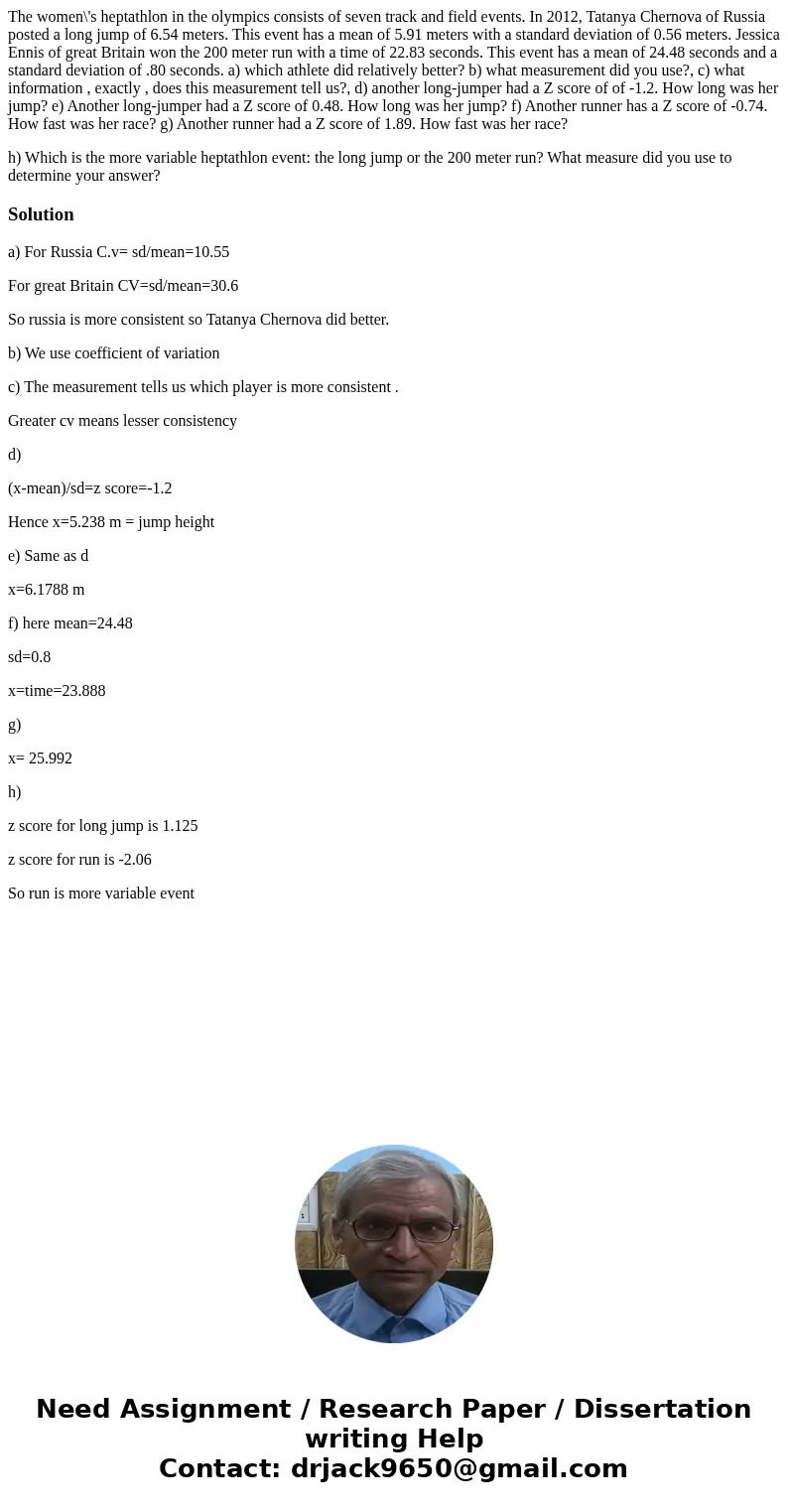The womens heptathlon in the olympics consists of seven trac
The women\'s heptathlon in the olympics consists of seven track and field events. In 2012, Tatanya Chernova of Russia posted a long jump of 6.54 meters. This event has a mean of 5.91 meters with a standard deviation of 0.56 meters. Jessica Ennis of great Britain won the 200 meter run with a time of 22.83 seconds. This event has a mean of 24.48 seconds and a standard deviation of .80 seconds. a) which athlete did relatively better? b) what measurement did you use?, c) what information , exactly , does this measurement tell us?, d) another long-jumper had a Z score of of -1.2. How long was her jump? e) Another long-jumper had a Z score of 0.48. How long was her jump? f) Another runner has a Z score of -0.74. How fast was her race? g) Another runner had a Z score of 1.89. How fast was her race?
h) Which is the more variable heptathlon event: the long jump or the 200 meter run? What measure did you use to determine your answer?
Solution
a) For Russia C.v= sd/mean=10.55
For great Britain CV=sd/mean=30.6
So russia is more consistent so Tatanya Chernova did better.
b) We use coefficient of variation
c) The measurement tells us which player is more consistent .
Greater cv means lesser consistency
d)
(x-mean)/sd=z score=-1.2
Hence x=5.238 m = jump height
e) Same as d
x=6.1788 m
f) here mean=24.48
sd=0.8
x=time=23.888
g)
x= 25.992
h)
z score for long jump is 1.125
z score for run is -2.06
So run is more variable event

 Homework Sourse
Homework Sourse